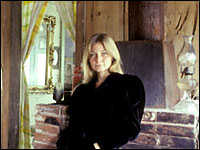Xanadu

Even though Matteo Ricci and Bento de Góis had already proven that Cathay is simply another name for China, the English cartographer John Speed in 1626 continued the tradition of showing “Cathaya, the Chief Kingdome of Great Cam” to the northeast of China. On his map, he placed Xandu east of the “Cathayan metropolis” Cambalu
| Xanadu Chinese: 上都 ; pinyin: Shàngdū |
|---|
Xanadu ( / ˈ z æ n . ə . d uː / ; Mongolian: šanadu ), or Shangdu (Chinese: 上都 ; pinyin: Shàngdū, Mandarin pronunciation: [ʂɑ̂ŋ tú] ) was the summer capital of Kublai Khan’s Yuan Dynasty in China, before he decided to move the seat of his dynasty to the Jin Dynasty capital of Zhōngdū (Chinese: 中都 ), which he renamed Dàdū, the present-day Beijing. Xanadu was described by the Venetian traveler Marco Polo, and in 1797 inspired a famous poem, Kubla Khan, by one of the leading English poets of the Romanticism movement, Samuel Taylor Coleridge.
Xanadu was located in what is now called Inner Mongolia, 275 kilometres (171 mi) north of Beijing, about 28 kilometres (17 mi) northwest of the modern town of Duolun. The layout of the capital is roughly square shaped with sides of about 2,200m; it consists of an “Outer City”, and an “Inner City” in the southeast of the capital which has also roughly a square layout with sides about 1,400m, and the palace, where Kublai Khan stayed in summer. The palace has sides of roughly 550m, covering an area of around 40% the size of the Forbidden City in Beijing. The most visible modern-day remnants are the earthen walls though there is also a ground-level, circular brick platform in the centre of the inner enclosure.
The city, originally named Kaiping (开平, Kāipíng), was designed by Chinese architect Liu Bingzhong from 1252 to 1256, [ 1 ] and Liu implemented a “profoundly Chinese scheme for the city’s architecture.” [ 2 ] In 1264 it was renamed Shangdu. At its zenith, over 100,000 people lived within its walls. In 1369 Shangdu was occupied by the Ming army and put to the torch. The last reigning Khan, Toghun Temür, fled the city.
Today, only ruins remain, surrounded by a grassy mound that was once the city walls. Since 2002 a reconstruction effort has been undertaken. In March 2008, China submitted a proposal to UNESCO to make the ruin a World Heritage Site under the title “Sites of the Yuan Dynasty Upper Capital (Xanadu) and Middle Capital”. [ 3 ]
Contents
- 1 Description of Xanadu by Marco Polo (1278)
- 2 Description of Xanadu by Toghon Temur (1368)
- 3 Xanadu in the travel book of Samuel Purchas (1625)
- 4 Xanadu in the poetry of Samuel Taylor Coleridge (1797)
- 5 References to Xanadu in popular culture
- 6 See also
- 7 References
- 8 External links
Description of Xanadu by Marco Polo (1278)[link]
The Venetian explorer Marco Polo is widely believed to have visited Xanadu in about 1275. In about 1298-1299, he dictated the following account, one of the most complete descriptions of the city as it existed:
And when you have ridden three days from the city last mentioned, between north-east and north, you come to a city called Chandu, which was built by the Khan now reigning. There is at this place a very fine marble Palace, the rooms of which are all gilt and painted with figures of men and beasts and birds, and with a variety of trees and flowers, all executed with such exquisite art that you regard them with delight and astonishment.
Round this Palace a wall is built,inclosing a compass of 16 miles, and inside the Park there are fountains and rivers and brooks, and beautiful meadows, with all kinds of wild animals (excluding such as are of ferocious nature), which the Emperor has procured and placed there to supply food for his gerfalcons and hawks, which he keeps there in mew. Of these there are more than 200 gerfalcons alone, without reckoning the other hawks. The Khan himself goes every week to see his birds sitting in mew, and sometimes he rides through the park with a leopard behind him on his horse’s croup; and then if he sees any animal that takes his fancy, he slips his leopard at it, and the game when taken is made over to feed the hawks in mew. This he does for diversion.
Moreover [at a spot in the Park where there is a charming wood] he has another Palace built of cane, of which I must give you a description. It is gilt all over, and most elaborately finished inside. [It is stayed on gilt and lacquered columns, on each of which is a dragon all gilt, the tail of which is attached to the column whilst the head supports the architrave, and the claws likewise are stretched out right and left to support the architrave.] The roof, like the rest, is formed of canes, covered with a varnish so strong and excellent that no amount of rain will rot them. These canes are a good 3 palms in girth, and from 10 to 15 paces in length. [They are cut across at each knot, and then the pieces are split so as to form from each two hollow tiles, and with these the house is roofed; only every such tile of cane has to be nailed down to prevent the wind from lifting it.] In short, the whole Palace is built of these canes, which (I may mention) serve also for a great variety of other useful purposes. The construction of the Palace is so devised that it can be taken down and put up again with great celerity; and it can all be taken to pieces and removed whithersoever the Emperor may command. When erected, it is braced [against mishaps from the wind] by more than 200 cords of silk.
The Khan abides at this Park of his, dwelling sometimes in the Marble Palace and sometimes in the Cane Palace for three months of the year, to wit, June, July, and August; preferring this residence because it is by no means hot; in fact it is a very cool place. When the 28th day of [the Moon of] August arrives he takes his departure, and the Cane Palace is taken to pieces. But I must tell you what happens when he goes away from this Palace every year on the 28th of the August [Moon].
Description of Xanadu by Toghon Temur (1368)[link]
The lament of Toghon Temur Khan (the “Ukhaant Khan” or “Sage Khan”), concerning the loss of Daidu (Beijing) and Heibun Shanduu (Kaiping Xanadu) in 1368, is recorded in many Mongolian historical chronicles. The Altan Tobchi version is translated as follows:
Xanadu in the travel book of Samuel Purchas (1625)[link]
In 1614, the English clergyman Samuel Purchas published Purchas his Pilgrimage – or Relations of the world and the Religions observed in all ages and places discovered, from the Creation unto this Present. This book contained a brief description of Xanadu, based on the early description of Marco Polo:
“In Xandu did Cublai Can build a stately Pallace, encompassing sixteen miles of plaine ground with a wall, wherein are fertile Meddowes, pleasant Springs, delightfull streames, and all sorts of beasts of chase and game, and in the middest thereof a sumpuous house of pleasure, which may be moved from place to place.” [ 5 ]
In 1625 Samuel Purchas published an expanded edition of this book, recounting the voyages of famous travelers. called Purchas his Pilgrimes . The eleventh volume of this book included a more detailed description of Xanadu, attributed to Marco Polo and dated 1320:
“This Citie is three dayes journey Northeastward to the Citie Xandu, which the Chan Cublai now reigning built; erecting therein a marvellous and artificiall Palace of Marble and other stones, which abutteth on the wall on one side, and the midst of the Citie on the other. He included sixteene miles within the circuit of the wall on that side where the Palace abutteth on the Citie wall, into which none can enter but by the Palace. In this enclosure or Parke are goodly meadows, springs, rivers, red and fallow Deere, Fawnes carrying thither for the Hawkes (of whom are three mewed above two hundred Gerfalcons which he goeth once a week to see) and he often useth one Leopard or more, sitting on Horses, which he setteth upon the Stagges and Deere, and having taken the beast, giveth it to the Gerfalcons, and in beholding this spectacle he taketh wonderful delight. In the middest in a faire wood he hath a royall House on pillars gilded and varnished, on every inch of which is a Dragon all gilt, which windeth his tayle about the pillar, which his head bearing up the loft, as also with his wings displayed on both sides; the cover also is of Reeds gilt and varnished, so that the rayne can doe it no injury; the reeds being three handfuls thick and ten yards log, split from knot to knot. The house itselfe also may be sundered, and taken downe like a Tent and erected again. For it is sustained, when it is set up, with two hundred silken cordes. Great Chan useth to dwell there three moneths in the yeare, to wit, in June, July and August. [ 6 ]
Xanadu in the poetry of Samuel Taylor Coleridge (1797)[link]
In 1797, according to his own account, the English poet Samuel Taylor Coleridge was reading about Xanadu in Purchas his Pilgrimage, fell asleep, and had an opium-inspired dream. The dream caused him to begin the poem known as ‘Kubla Khan’. Unfortunately Coleridge’s writing was interrupted by an unnamed “man from Porlock,” causing him to forget much of the dream, but his images of Xanadu became one of the best-known poems in the English language.
Coleridge described how he wrote the poem in the preface to his collection of poems, Christabel, Kubla Khan, and the Pains of Sleep, published in 1816:
“In the summer of the year 1797, the Author, then in ill health, had retired to a lonely farm-house between Porlock and Linton, on the Exmoor confines of Somerset and Devonshire. In consequence of a slight indisposition, an anodyne had been prescribed, from the effects of which he fell asleep in his chair at the moment that he was reading the following sentence, or words of the same substance, in ‘Purchas’s Pilgrimage’: Here the Khan Kubla commanded a palace to be built, and a stately garden thereunto. And thus ten miles of fertile ground were inclosed with a wall. The Author continued for about three hours in a profound sleep, at least of the external senses, during which time he has the most vivid confidence, that he could not have composed less than from two to three hundred lines; if that indeed can be called composition in which all the images rose up before him as things with a parallel production of the correspondent expressions, without any sensation or consciousness of effort. On awakening he appeared to himself to have a distinct recollection of the whole, and taking his pen, ink, and paper, instantly and eagerly wrote down the lines that are here preserved.” “A person on business from Porlock” interrupted him and he was never able to recapture more than “some eight or ten scattered lines and images.” [ 7 ]
Coleridge’s description of Xanadu has echoes of the works of both Marco Polo and Samuel Purchas. In his description of Xanadu, Marco Polo wrote:
“. Round this Palace a wall is built, inclosing a compass of sixteen miles, and inside the Park there are fountains and rivers and brooks and beautiful meadows, with all kinds of wild animals (excluding such as are of ferocious nature). [ 8 ]
This became, in Purchas’s book Purchas his Pilgrimage:
In Xandu did Cublai Can build a stately Pallace, encompassing sixteen miles of plaine ground with a wall, wherein are fertile Meddowes, pleasant Springs, delightfull streames, and all sorts of beasts of chase and game, and in the middest thereof a sumpuous house of pleasure, which may be moved from place to place. [ 9 ]
This became, in Coleridge’s poem:
In Xanadu did Kubla Khan A stately pleasure-dome decree: Where Alph, the sacred river, ran Through caverns measureless to man Down to a sunless sea. So twice five miles of fertile ground With walls and towers were girdled round: And here were gardens bright with sinuous rills, Where blossomed many an incense-bearing tree; And here were forests ancient as the hills, Enfolding sunny spots of greenery. (lines 1-11) [ 10 ]
References to Xanadu in popular culture[link]
Thanks to a poem by Coleridge, Xanadu became a metaphor for splendor and opulence. It was the name of Charles Foster Kane’s estate in the film Citizen Kane, and also that of Mandrake the Magician in the long-running comic strip. The title name of the 1980 film Xanadu is a reference to Coleridge’s poem. This film starred Gene Kelly and Olivia Newton-John and was widely considered a big-budget flop, but its soundtrack spawned several hit singles for Ms. Newton-John, such as the #1 hit “Magic”, a duet with Cliff Richard called “Suddenly”, and, with Electric Light Orchestra accompaniment, the title song “Xanadu”. ELO had soundtrack hits of their own with “I’m Alive” and “All Over the World”.
Another known reference to Coleridge’s poem is the song “Xanadu” by Canadian rock band Rush in their 1977 album A Farewell to Kings. Also, in their debut album Welcome to the Pleasuredome which rocketed to rank one in the UK charts in its very first week in 1984, Frankie Goes to Hollywood referred to the poem in the title track. While they changed the poem’s starting line In Xanadu did Kubla Khan, A stately pleasure-dome decree to In Xanadu did Kubla Khan, A pleasure-dome erect, they delivered an atmospheric video that interwove contemporary mid-80’s youth culture with elements of a fictitious Xanadu themepark. [ 11 ] The name was also used as a cheat code to unlock the unicorn in Zoo Tycoon. In Xanadu is a 1989 travel book by William Dalrymple, at the age of 22 he sets off along the Silk Road from Antioch.
In 2006, the International Astronomical Union (IAU) named a continent-sized area of Saturn’s moon Titan as Xanadu after it was referred from Coleridge’s poem. [ 12 ] Xanadu has raised considerable interest in Scientists after its radar image showed its terrain to be quite similar to earth’s terrain with flowing river (probably of methane and ethane, not of water as they are in Earth), mountains (of ice, not rock) and sand dunes. [ 13 ]
In the Japanese light novel and anime series Shakugan no Shana, Xanadu is the name of the paradise to be created by the God of Creation (Snake of the Festival). An exact replica of the world located in the rift between the human world and the “Crimson World” that is said to be a paradise where Crimson Denizens will no longer be required to devour humans for their survival and live in peace with their former adversaries, the Flame Haze.
In the sci-fi/cyberpunk/fantasy novels Otherland by Tad Williams, Paul Jonas passes through a “simworld”, or highly realistic simulation, of Xanadu, as described in Coleridge’s poem.
A Jon McLaughlin song titled “You Can Never Go Back” mentions Xanadu.
Arthur C. Clarke wrote a parody of Coleridge’s poem, describing his tumultuous experience co-scripting the film 2001. It goes:[1] [ 14 ]
For MGM did Kubrick, Stan A stately astrodome decree While Art, the s.f. writer, ran Through plots incredible to man, In search of solvency. So twice five miles of Elstree ground With sets and props were girdled round. A savage place! as eerie and enchanted As ere beneath a flickering arc was haunted By child-star wailing for her demon mother. For months meandering with a mazy motion Through stacks of scripts the desperate writer ran Then reached that plot incredible to man And sank, enSCUBA’d in the Indian Ocean. And midst the tumult Kubrick heard from far Accountants’ voices, prophesying war!
See also[link]
- Karakorum, the earlier Mongol capital founded by Genghis Khan, and built in stone by Ogedei Khan in 1220
- Shangri-La
- Shambhala
- Xanadu (Titan)
- Xanadu (Rush song)
References[link]
- ^“Yuan dynasty”. Princeton University Art Museum . http://etcweb.princeton.edu/asianart/timeperiod_china.jsp?ctry=China&pd=Yuan .
- ^ Nancy Shatzman Steinhardt (1999). Chinese imperial city planning. University of Hawaii Press. p. 153. ISBN0-8248-2196-3. “Liu Bingzhong implemented a preconceived and profoundly Chinese scheme for the city’s architecture.”
- ^http://whc.unesco.org/en/tentativelists/5326/
- ^http://hicheel.com/?category_name=%D0%B0%D0%BB%D1%82%D0%B0%D0%BD-%D1%82%D0%BE%D0%B2%D1%87&paged=5
- ^http://www.archive.org/details/purchashispilgri00purc Samuel Purchas, Purchas his Pilgrimage, the Fourth Book, chapter 13, page 415. digital version from the copy owned by John Adams in the Boston Public Library.
- ^http://books.google.com/books?id=eEIMAAAAIAAJ&oe=UTF-8Hakluytus posthumus or Purchas his Pilgrimes, contayning a history of the world in sea voyages and lande travels by Englishmen and others, Volume 11. Reprint of the 1625edition made in 1906 by J, MacLehose and sons, Glasgow. Digitized in Google ebook.
- ^ Samuel Taylor Coleridge, Christabel, Kubla Khan, and the Pains of Sleep, 2nd edition, William Bulmer, London, 1816.
- ^http://en.wikisource.org/wiki/The_Travels_of_Marco_Polo/Book_1/Chapter_61 The Travels of Marco Polo, Book 1/Chapter 61, Of the City of Chandu, and the Kaan’s Palace There. from Wikisource, translated by Henry Yule.
- ^http://www.archive.org/details/purchashispilgri00purc Samuel Purchas, Purchas his Pilgrimage, the Fourth Book, chapter 13, page 415. digital version from the copy owned by John Adams in the Boston Public Library.
- ^ Samuel Taylor Coleridge, Selected Poetry, Oxford University Press, 1997, pg. 102
- ^“Frankie Goes To Hollywood – Welcome To The Pleasuredome Official Music Video”. ZTT Records . http://www.youtube.com/watch?v=t3eLwieQ4sA .
- ^“Planetary Names: Albedo Feature: Xanadu on Titan”. IAU . http://planetarynames.wr.usgs.gov/Feature/6958 .
- ^“Cassini Reveals Titan’s Xanadu Region to Be an Earth-Like Land”. NASA . http://www.nasa.gov/mission_pages/cassini/media/cassini-20060719.html .
- ^ Clarke, Arthur. C. (1972), The Lost Worlds of 2001,page 190
External links[link]
- Shangdu Google Satellite Map
- Sites of the Yuan Dynasty Upper Capital (Xanadu) and Middle Capital (UNESCO World Heritage)
- More directions to Yuan Shangdu
This article is licensed under the Creative Commons Attribution-ShareAlike 3.0 Unported License, which means that you can copy and modify it as long as the entire work (including additions) remains under this license.



